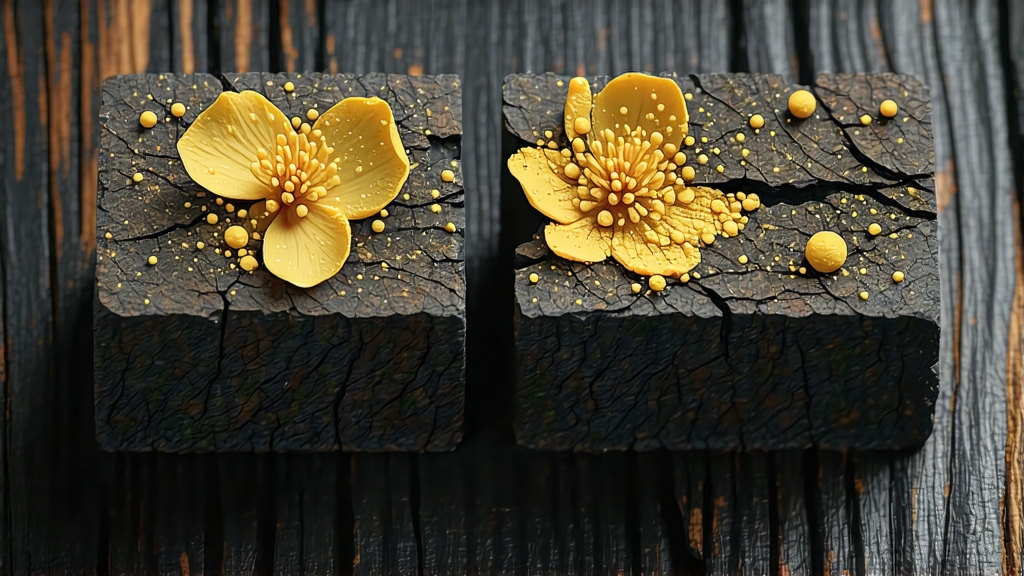
If green tea is the fresh-faced scholar of Chinese leaf lore, then Fu brick tea (Fú zhuān chá) is the weathered caravan master who once guided camel trains across the Gobi, carrying on his back not only commerce but microscopic life that would one day bloom into a glittering constellation of golden fungi. Among the six major tea families, dark tea—hei cha—remains the least understood outside China, and within that shadowy realm Fu brick reigns as both the most travelled and the most biologically flamboyant. This essay invites the international reader to walk the 600-year arc of Fu brick, from Ming-dynasty frontier barter to twenty-first-century wellness cup, and to learn how to coax its mellow, hay-sweet liquor from a seemingly impenetrable black slab.
-
Historical footprints along the brick road
The story begins in 1368, the first year of the Ming, when the imperial court moved the tea-for-horse market westward to Xianyang and Jingyang, towns that sat astride the route connecting Sichuan tea gardens with the horse-starved garrisons of the northwest. To reduce volume and deter theft, green rough tea was steamed, compressed into 2-kilogram bricks, wrapped in straw and bamboo, and lashed to pack animals. The bricks fermented accidentally during the month-long trek, arriving darker, smoother, and strangely flecked with yellow. Tibetan, Mongol and Uyghur traders loved the new flavour and, more importantly, found that it settled stomachs soured by yak butter and barley beer. By the Qing dynasty the court had codified the “Official Tea Road,” and 5,000 tonnes of Fu bricks left Shaanxi annually, a currency as trusted as silver. Caravans carried them over the 5,000-metre passes of the Himalaya; Russian merchants transferred them at Kyakhta to sledges bound for Saint Petersburg. Thus a humble brick born in China’s interior circled northern Asia, earning the nickname “the tea that went to Moscow before it reached Beijing.” -
Terroir and the two modern homes
Today authentic Fu brick is produced in only two counties under the Qinling Mountains: Jingyang and Xianyang in Shaanxi Province, and, since the 1950s, Anhua County in Hunan. The latter enjoys a subtropical monsoon climate, granite soils rich in selenium, and a misty microclimate created by the Zijiang River—conditions that push tea polyphenols higher and encourage the resident Eurotium cristatum to flourish. While Shaanxi bricks are still pressed from the small-leaf cultivars of the northern tea belt, Hunan versions use the robust Da-leaf (large-leaf) variety, yielding a deeper colour and more tannic backbone. Both regions must obey the National Geographical Indication standard that stipulates a minimum 30-day “flowering” period, ensuring the brick develops the coveted golden coat. -
Crafting a living brick: from kill-green to golden bloom
Fu brick manufacture is a dance between moisture, heat, and microbiology that departs radically from other dark teas such as Pu-erh.
Step 1: Fixing and rolling
Fresh leaves are pan-fired at 280 °C for three minutes to deactivate oxidative enzymes, then rolled into tight strips that will later trap humidity.
Step 2: Piling the “wet heap”
The fixed tea is sprayed to 30 % moisture and stacked 70 cm high under linen. For eight hours the pile hovers at 55 °C, softening leaf structure and initiating lactic acid bacteria.
Step 3: Stoving and blending
The tea is dried to 14 % moisture, then blended with 5 % “old tea mother”—crumbs from a previous batch already rich in Eurotium spores—functioning like sourdough starter.
Step 4: Brick pressing
The blend is steamed for 30 seconds, tipped into a cedar-wood mould lined with cotton paper, and compressed under 50 tonnes of hydraulic pressure for six seconds. The resulting brick is 35 cm × 19 cm × 4 cm, weighing exactly 2 kg, a size codified in 1839 to fit the saddlebags of a Bactrian camel.
Step 5: Flowering (Fā huā)
Bricks are stacked in an underground cave or modern climate room at 28 °C and 75 % relative humidity for 25–40 days. During this